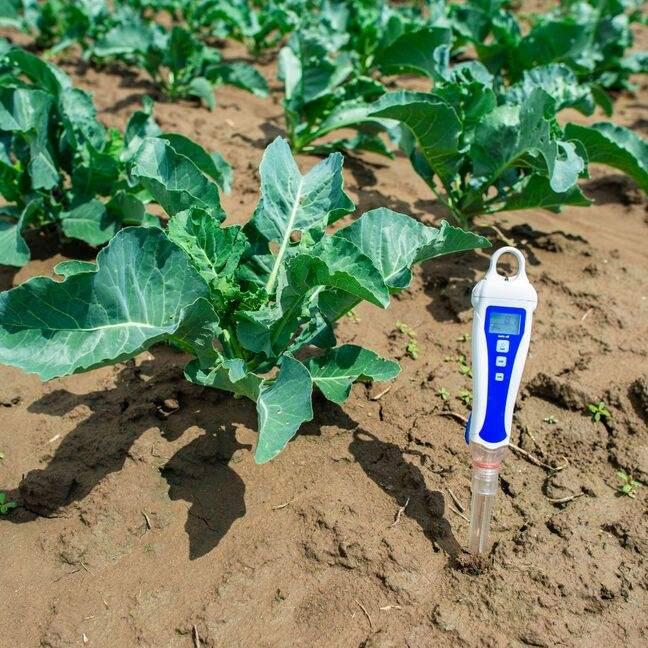4+1 ways to correct pH in alkaline soils
By AgriSC Scientific Team
The soil’s pH value represents its acidity or alkalinity (alkalinity). The range of pH values varies from 0 to 14. Several tests on the market measure the concentration of hydrogen ions in the soil liquid, providing the pH value.
When the pH value is 7,0, the soil is considered neutral. A lower pH indicates acidic soil, with acidity increasing the lower the value. Conversely, a higher pH indicates alkaline (bare) soil, with alkalinity increasing the value.
Remember that the pH scale is logarithmic, meaning that one unit of change in pH represents a tenfold change in acidity or alkalinity.
When do we consider the soil actually to be alkaline?
A field’s soil can be classified as alkaline because of its high calcium content (calcareous soils). In addition, using alkaline water for irrigation can increase soil alkalinity, which can be managed.
Calcareous soils are generally created from soils with a high calcium carbonate content. In addition, they increase the concentration of calcium carbonate in the surface layers after weathering (under dry or semi-dry conditions).


What problems are caused to plants by high pH in alkaline soils?
The limited availability of many plant nutrients causes food deficiencies and abnormalities in plant growth and is the main problem. In particular, the availability of the elements (iron, zinc, copper, and manganese) is limited, and plant roots have difficulty absorbing them. A common problem caused by this is the chlorosis of the younger leaves at the top of the plant due to a lack of iron.
In addition, phosphorus in alkaline soils with a high pH value may be limited in the soil solution due to its vertical precipitation in the lower layers.
To address these problems, you can send your soil sample for analysis to a local laboratory. This will determine the pH and allow you to receive recommendations from an agronomic expert on the necessary measures.

What are the ways to correct an alkaline soil with high pH?
1. Use of chelated fertilizers
Farmers can add chelated fertilizers to the soil to increase the concentrations of nutrients needed by plants. However, the addition of phosphate fertilizers can further reduce the availability of other nutrients.
2. Addition of Sulphur
Reducing the pH of alkaline soil to levels of 6,2 – 7,3 (preferable for most plants) is achieved by adding sulfur (in powder form) directly to the soil before planting or sowing. Alternatively, iron and clay compounds can be added, as these substances release hydrogen cations when they react with water.
3. Adding organic fertilizers
Adding large amounts of organic fertilizers, such as composts with materials that make the soil acidic (pine needles), helps to acidify the soil. During decomposition by micro-organisms, carbon dioxide (CO2) is released, forming carbonic acid.
4. Use of ammonia sulfate as fertilizer
An acidic fertilizer, such as ammonia sulfate, helps to reduce the soil’s pH. Nitrifying bacteria in the soil slowly break down ammonia into nitrate ions and hydrogen cations.
5. Planting resistant plants
Many plants can tolerate pH values between 7 and 8; others prefer such soils to grow successfully.

In conclusion, calcareous soils, which are alkaline naturally and not due to improper cultural practices, make it difficult to make them less alkaline.
Achieving even a small change in pH in these soils may take many years; even then, the material in the subsurface layers will continue to release calcium, affecting the soil pH in the area. To improve this situation, the following are required:
- An analysis of the pH of your field by a reliable laboratory and
- The advice of an expert agronomist is on the direction and dosage of the materials to be used.
Είσαι γεωπονικό κατάστημα και σε ενδιαφέρει η συνεργασία με την AgriSC; Συμπλήρωσε την παρακάτω φόρμα και θα επικοινωνήσουμε μαζί σου!

